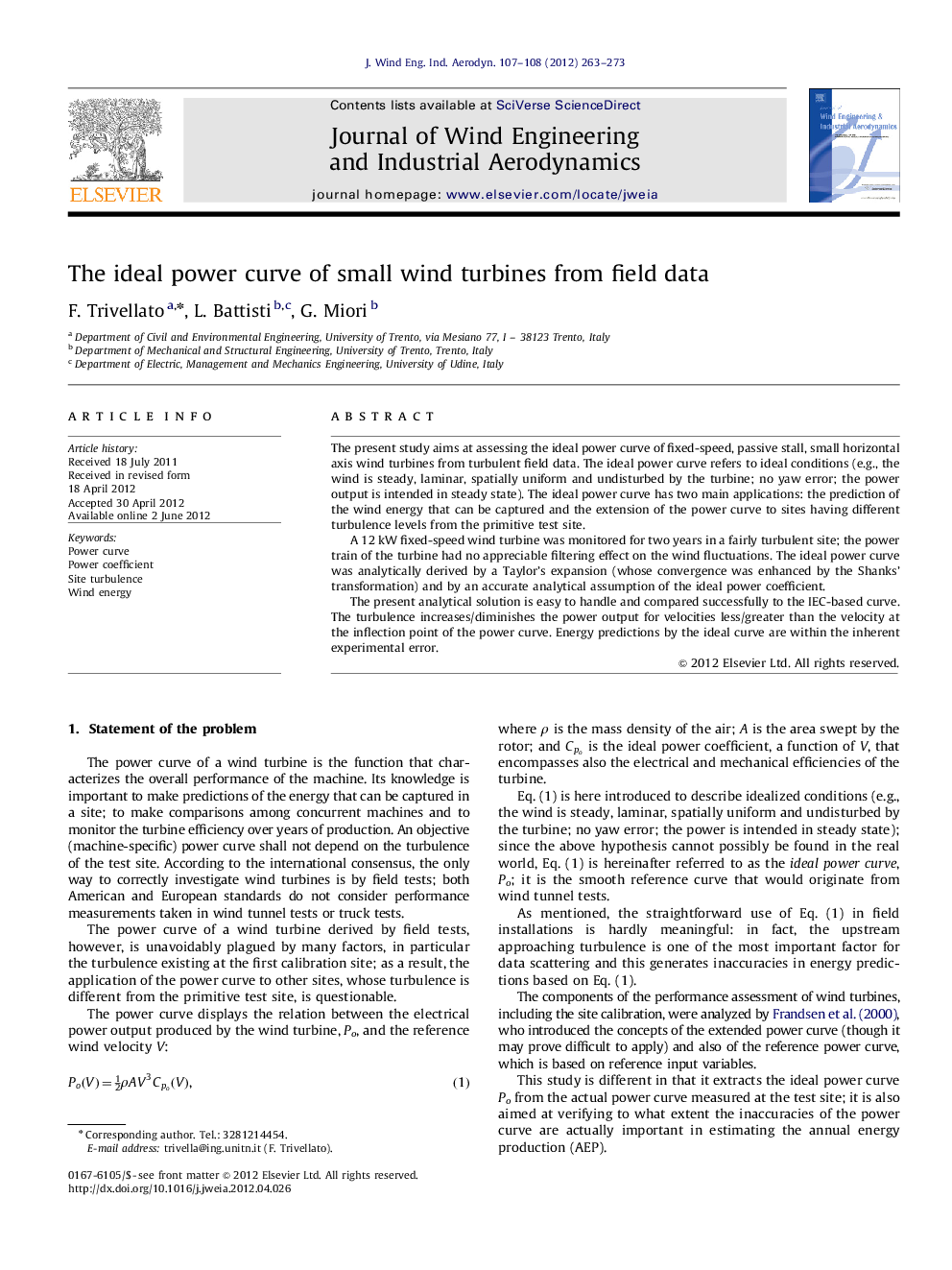| Article ID | Journal | Published Year | Pages | File Type |
|---|---|---|---|---|
| 292885 | Journal of Wind Engineering and Industrial Aerodynamics | 2012 | 11 Pages |
The present study aims at assessing the ideal power curve of fixed-speed, passive stall, small horizontal axis wind turbines from turbulent field data. The ideal power curve refers to ideal conditions (e.g., the wind is steady, laminar, spatially uniform and undisturbed by the turbine; no yaw error; the power output is intended in steady state). The ideal power curve has two main applications: the prediction of the wind energy that can be captured and the extension of the power curve to sites having different turbulence levels from the primitive test site.A 12 kW fixed-speed wind turbine was monitored for two years in a fairly turbulent site; the power train of the turbine had no appreciable filtering effect on the wind fluctuations. The ideal power curve was analytically derived by a Taylor's expansion (whose convergence was enhanced by the Shanks' transformation) and by an accurate analytical assumption of the ideal power coefficient.The present analytical solution is easy to handle and compared successfully to the IEC-based curve. The turbulence increases/diminishes the power output for velocities less/greater than the velocity at the inflection point of the power curve. Energy predictions by the ideal curve are within the inherent experimental error.
► Both IEC and manufacturer power curves are derived from field turbulent data. ► The new concept of “ideal” (as opposed to “real”) power curve is herein introduced. ► Analytical method: Taylor's expansion of the real power curve; new assumption for Cp. ► The ideal power curve provides an handy, and yet accurate, method to forecast AEP.
